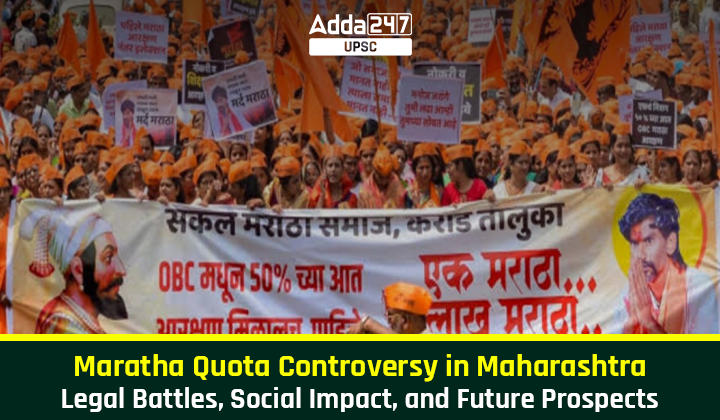Table of Contents
The issue of reservation for the Maratha community in Maharashtra has been a contentious subject, sparking legal battles and social unrest. The recent developments in the Supreme Court and the state government’s response have further escalated the debates and protests. This article seeks to delve into the history of the Maratha reservation, judicial rulings, social and economic conditions, and the government’s current actions amid mounting pressure and protests led by figures like Manoj Jarange-Patil.
Historical Background of Maratha Quota Demand
The demand for reservations for the Maratha community is not new in Maharashtra. Dating back over three decades, the first protests were initiated by leaders like Annasaheb Patil, highlighting the socio-economic plight of the Marathas. The Marathas, constituting a significant portion of the state’s population, primarily comprise peasants, landowners, and various other castes.
Legal Battles and Rulings
- The legal journey for the Maratha reservation has been multifaceted. The BJP government in Maharashtra proposed a 16% reservation in education and government jobs in November 2018. However, this move faced challenges in court.
- The Bombay High Court, in its June 2019 ruling, upheld the constitutional validity of the Maratha quota but reduced the percentage to 12% in education and 13% in government jobs based on the Maharashtra State Backward Class Commission’s recommendations.
- The High Court heavily relied on the findings of the Maharashtra State Backward Class Commission, indicating social, economic, and educational backwardness among the Maratha community.
- This included data on the prevalence of agricultural labor, lack of proper housing and amenities, high illiteracy rates, and other indicators of social and educational deprivation within the community.
However, in May 2021, the Supreme Court struck down the Maratha quota, citing that it exceeded the 50% reservation ceiling set by the court in its 1992 Indra Sawhney judgment.
The apex court emphasized that no extraordinary circumstances were evident to justify surpassing this threshold, indicating that Marathas were considered a dominant forward class within the societal framework.
Government’s Response and Current Actions
- In the wake of the Supreme Court’s decision, the Maharashtra government faced a challenge to resolve the issue. The state sought to offer economically weaker members of the Maratha community benefits from the 10% quota for Economically Weaker Sections (EWS) until the Maratha reservation matter was resolved.
- As protests intensified, the government formed a committee to examine the procedure of providing Kunbi (OBC) certificates to Marathas, aiming to establish a legal basis for their inclusion.
- The state announced its intentions to file a curative petition in the Supreme Court and has taken steps to study historical records to substantiate the community’s backwardness.
Social Impact and the Road Ahead
- The debate over the Maratha reservation goes beyond legal intricacies; it encompasses the social and economic conditions of a significant portion of Maharashtra’s population.
- The existing reservation structure in the state already accounts for various communities and their representation.
- The ongoing protests and the demand for reservation underscore the socio-economic challenges faced by the Maratha community.
- Their grievances regarding land ownership, educational backwardness, and lack of adequate resources continue to be pivotal aspects of the debate.
- The road ahead for the Maratha reservation involves a multi-dimensional approach, including legal strategies, comprehensive surveys, and addressing the community’s socio-economic issues.
Conclusion
The Maratha quota issue in Maharashtra stands at a crucial juncture, marked by legal complexities, social disparities, and political implications. The Supreme Court’s ruling and subsequent governmental efforts to address the concerns of the Maratha community highlight the need for a balanced and inclusive approach.
The dialogue surrounding reservation policies should consider both legal parameters and the ground realities of social and economic deprivation faced by the Marathas. The path forward necessitates a nuanced understanding of the community’s challenges and a concerted effort to address them within the framework of constitutional provisions and social justice.
As Maharashtra navigates through this challenging issue, balancing legal precedents and societal well-being becomes imperative in ensuring a fair and equitable solution for the Maratha community.



 TSPSC Group 1 Question Paper 2024, Downl...
TSPSC Group 1 Question Paper 2024, Downl...
 TSPSC Group 1 Answer key 2024 Out, Downl...
TSPSC Group 1 Answer key 2024 Out, Downl...
 UPSC Prelims 2024 Question Paper, Downlo...
UPSC Prelims 2024 Question Paper, Downlo...
